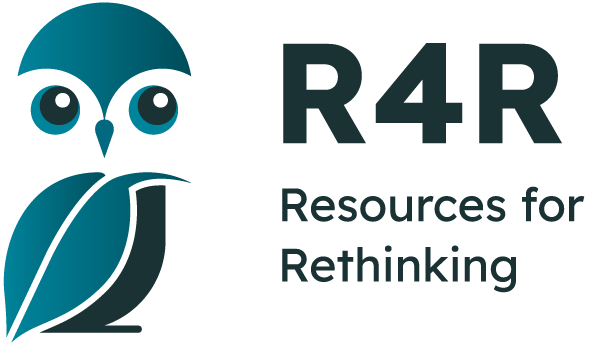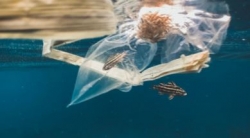- Home
- Tutorial
- Resource Guides
- Focus Areas
- LSF Programs
-
Professional
Development - Review Process
-
A project of LSF

Search for Resources
Description
This resource is one of 12 found in Green Learning’s ECO 360- a comprehensive study of the circular economy. In this activity, students will learn about the impacts of plastic in oceans, microplastic production, and how it ends up in our environments. They will explore the harmful effects of macro and microplastics in our water bodies, particularly our oceans.
This lesson is divided into four steps:
- Step 1: The teacher will explain how plastics end up in our oceans.
- Step 2: Students will watch two videos to understand how plastics impact our oceans and why they are harmful.
- Step 3: Using the backgrounder and videos provided, introduce ocean currents and ocean gyres and how they distribute plastic around the globe. Students will then use their newfound knowledge to create a mind map of how plastic waste enters the oceans, its journey from there and its impacts on marine life.
- Step 4: Each group will present their mind maps to the class highlighting their key findings.
Step 4: Each group will present their mind maps to the class highlighting their key findings.
Step 5: Ask students to take action to stop plastics from ending up in our water oceans.
An extension activity, called You Are What You Eat, is also provided.
- Step 5: Ask students to take action to stop plastics from ending up in our water oceans.
An extension activity, called You Are What You Eat, is also provided.
General Assessment
What skills does this resource explicitly teach?
This resource provides a tutorial on how to make a mind map.
Strengths
- A backgrounder is included which explains the issue of plastics in the ocean
- Extra resources are included to go deeper into the issue
- All activities are well explained for teachers to use in their classroom
- A variety of activities adresses the needs of kinesthetic, visual, and auditory learners
- The issue of plastics in the marine environment is a current and relevant issue for students
Weaknesses
- You must register to access this resource
- Taking action activities are provided as extensions to this resource
- Evaluation tools are not provided in this lesson plan
Recommendation of how and where to use it
This resource would be excellent to use when discussing the impact of humans on marine environments. It could also be used to highlight World Oceans Day in early June.
Relevant Curriculum Units
The following tool will allow you to explore the relevant curriculum matches for this resource. To start, select a province listed below.
- Step 1Select a province
- Alberta
- Step 2Select a grade level
- Grade 9
- Step 3Select a subject
- Science
- Step 4Relevant matches
- Biological Diversity
- Knowledge and Employability Science: Biological Diversity (Social and Environmental Contexts Emphasis)
- Grade 10
- Step 3Select a subject
- Science
- Step 4Relevant matches
- Science 10-4 (Knowledge and Employability Science): Investigating Matter and Energy in Environmental Systems
- Science 14:Investigating Matter and Energy in the Environment
- British Columbia
- Manitoba
- New Brunswick
- Newfoundland & Labrador
- Northwest Territories
- Step 2Select a grade level
- Grade 11
- Step 3Select a subject
- Science
- Step 4Relevant matches
- Experiential Science 20, Marine Systems: Habitats, Population Dynamics and Management
- Experiential Science 20, Marine Systems: Introduction to Oceanography
- Experiential Science 20, Marine Systems: Ocean Ecology
- Grade 12
- Step 3Select a subject
- Science
- Step 4Relevant matches
- Experiential Science 30, Freshwater Systems:Freshwater Ecology
- Experiential Science 30, Freshwater Systems:Freshwater Resource Management
- Specialized Science 12: Biodiversity is dependent on the complex interactions and processes between biotic and abiotic factors
- Nova Scotia
- Nunavut
- Step 2Select a grade level
- Grade 9
- Step 3Select a subject
- Science
- Step 4Relevant matches
- Biological Diversity
- Knowledge and Employability Science: Biological Diversity (Social and Environmental Contexts Emphasis)
- Grade 10
- Step 3Select a subject
- Science
- Step 4Relevant matches
- Science 10-4 (Knowledge and Employability Science): Investigating Matter and Energy in Environmental Systems
- Science 14: Investigating Matter and Energy in the Environment
- Grade 11
- Step 3Select a subject
- Science
- Step 4Relevant matches
- Experiential Science 20, Marine Systems: Habitats, Population Dynamics and Management
- Experiential Science 20, Marine Systems: Introduction to Oceanography
- Experiential Science 20, Marine Systems: Ocean Ecology
- Grade 12
- Step 3Select a subject
- Science
- Step 4Relevant matches
- Experiential Science 30, Freshwater Systems:Freshwater Ecology
- Experiential Science 30, Freshwater Systems:Freshwater Resource Management
- Ontario
- Prince Edward Island
- Quebec
- Step 2Select a grade level
- Grade 10
- Step 3Select a subject
- Science & Technology
- Step 4Relevant matches
- Environmental Science & Technology: The Earth and Space
- Science & Technology: The Earth and Space
- Science and the Environment: The Earth and Space
Themes Addressed
Ecosystems (1)
- Appreciating the Natural World
Human Health & Environment (1)
- Environmental Contaminants & Health Hazards
Land Use & Natural Resources (1)
- Fisheries
Waste Management (1)
- Source Reduction
Water (2)
- Marine Environments
- Water Quality
Sustainability Education Principles
| Principle | Rating | Explanation |
|---|---|---|
| Consideration of Alternative Perspectives | Very Good | Throughout the multiple videos and explanations, students will gain a good understand of the production of macro and microplastic, and how it ends up in our environment. They will also explore the impacts of plastic in water bodies. The extent of the information will help students take an informed position on the issue. |
Consideration of Alternative Perspectives:
| ||
| Multiple Dimensions of Problems & Solutions | Satisfactory | The issue of plastics in the oceans has economic, environmental, and social implications. The exploration of these considerations is however beyond the objectives of this lesson. |
| Multiple Dimensions of Problems & Solutions: Effectively addresses the environmental, economic and social dimensions of the issue(s) being explored.
| ||
| Respects Complexity | Very Good | |
| Respects Complexity: The complexity of the problems/issues being discussed is respected. | ||
| Acting on Learning | Satisfactory | In Step 5 the students watch videos of communities making a difference across Canada by diverting plastic waste from ending up in our water bodies and making its way to our oceans. The resource asks "Can your learners take similar action to stop plastics from ending up in our water oceans? Ask your learners to share their ideas with their network on social media" This is more of an extension idea. |
| Acting on Learning: Learning moves from understanding issues to working towards positive change — in personal lifestyle, in school, in the community, or for the planet
| ||
| Values Education | Very Good | Throughout this lesson, students will be able to express their beliefs and values during the multiple discussions. |
| Values Education: Students are explicitly provided with opportunities to identify, clarify and express their own beliefs/values. | ||
| Empathy & Respect for Humans | Poor/Not considered | This is not a focus of this resource. |
| Empathy & Respect for Humans: Empathy and respect are fostered for diverse groups of humans (including different genders, ethnic groups, sexual preferences, etc.). | ||
| Personal Affinity with Earth | Good | While learning about the efffects of plastics in the ocean, students will gain an appreciation for the marine environment. |
| Personal Affinity with Earth: Encourages a personal affinity with -the natural world.
| ||
| Locally-Focused Learning | Good | Plastics in the ocean is a real problem and one students can understand and relate to. However, students will do all learning from inside the classroom. |
| Locally-Focused Learning: Includes learning experiences that take advantage of issues/elements within the local community.
| ||
| Past, Present & Future | Very Good | In this resource, students will get to explore how plastics ended up in the ocean, the reality of the present, and will think about what actions could be taken to help in the future. |
| Past, Present & Future: Promotes an understanding of the past, a sense of the present, and a positive vision for the future. | ||
Pedagogical Approaches
| Principle | Rating | Explanation |
|---|---|---|
| Open-Ended Instruction | Very Good | Students will get to share their opinion on the topic throughout the lesson in discussions, their reflections, as well as their mind map. |
| Open-Ended Instruction
: Lessons are structured so that multiple/complex answers are possible; students are not steered toward one 'right' answer. | ||
| Integrated Learning | Satisfactory | Although this lesson is mostly geared toward Science courses, it could be used to spark some debates in language classes. |
| Integrated Learning: Learning brings together content and skills from more than one subject area
| ||
| Inquiry Learning | Satisfactory | Although this lesson plan has students doing prescribed activities, students will get to think of their own idea for stopping plastic from making its way to the oceans. |
| Inquiry Learning: Learning is directed by questions, problems, or challenges that students work to address.
| ||
| Differentiated Instruction | Good | The variety of activities in this lesson will address well the needs of visual, auditory and kinesthetic learners. However, strategies for learners with difficulties are not provided. |
| Differentiated Instruction: Activities address a range of student learning styles, abilities and readiness.
| ||
| Experiential Learning | Poor/Not considered | This is not a focus of this resource. |
| Experiential Learning: Authentic learning experiences are provided
| ||
| Cooperative Learning | Satisfactory | Students will work in groups to complete the activites in this resource. |
| Cooperative Learning: Group and cooperative learning strategies are a priority.
| ||
| Assessment & Evaluation | Satisfactory | Evaluation tools are not provided in this resource. However, teachers could use the mind map to assess students understanding of the issue. |
| Assessment & Evaluation: Tools are provided that help students and teachers to capture formative and summative information about students' learning and performance. These tools may include reflection questions, checklists, rubrics, etc. | ||
| Peer Teaching | Satisfactory | At the end of the lesson, students will get to share their ideas about how to stop plastic from entering the oceans on social media. |
| Peer Teaching: Provides opportunities for students to actively present their knowledge and skills to peers and/or act as teachers and mentors.
| ||
| Case Studies | Very Good | Students will have to explore the Gyre and how the garbage patches are formed in the ocean. These are real life events and current in society at the moment. |
| Case Studies: Relevant case studies are included. Case studies are thorough descriptions of real events from real situations that students use to explore concepts in an authentic context. | ||
| Locus of Control | Satisfactory | The lesson is very directed and moves tightly through a series of steps. Many resources are provided in the lesson if students want to further explore the issue. |
| Locus of Control: Meaningful opportunities are provided for students to choose elements of program content, the medium in which they wish to work, and/or to go deeper into a chosen issue. | ||

